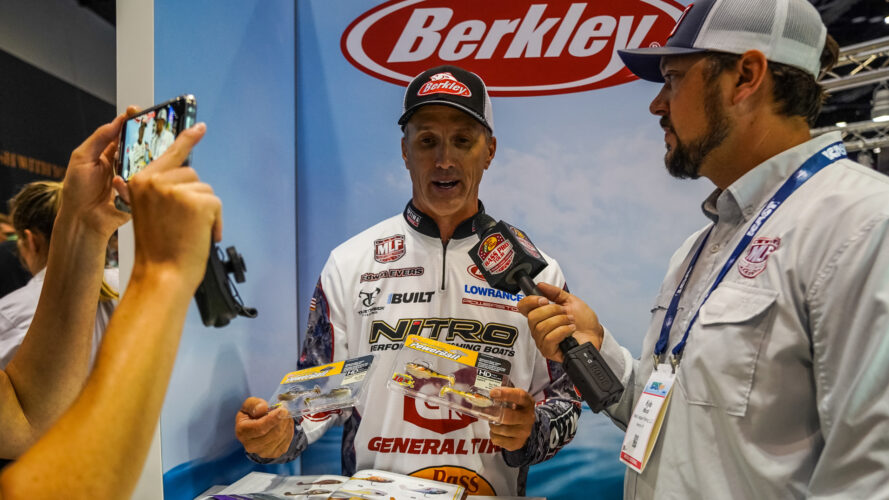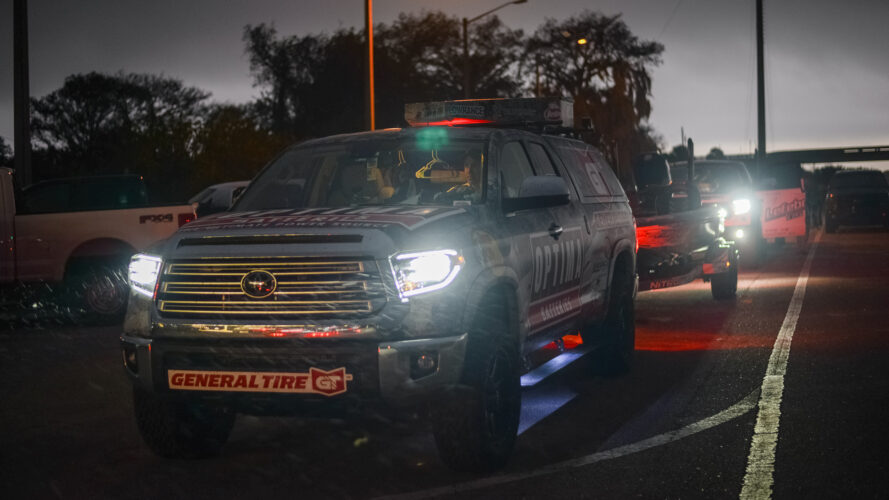EDWIN EVERS: A Great Time to Get Organized

Winter is in full swing, so it’s a time when a lot of us start looking ahead and thinking about what we can do to make this year better than the last. For most of us, it’s the little things that will make a big difference, and one of the best places to start is by improving our organization.
This winter, instead of wishing we were fishing, let’s get in our garages or tackle rooms and take a real step forward with our fishing organization. Don’t worry. You don’t have to spend a lot of money or dedicate a lot of space to your effort. You just have to focus on what you have and where you keep it. And, if you do it right, I guarantee it will make your fishing better in 2022.
There are a lot of theories about organization, and they probably all have some merit. I can only tell you what works for me. Hopefully, you can gain something from that, tweak it a little for your own situation and make it work for you.
Of course, everyone’s circumstances are different. We all have different amounts of tackle, different space to keep it in, and different ideas about what works and what doesn’t work. But I bet we can all agree on a good organization standard: You’re well organized when you can lay your hands on any particular lure or tool or rod or reel in just a few seconds — not minutes.
If I had to break my organization efforts down into just a few steps, it would be these.
Step 1: Everything Out
This step is the easiest … and the least painful. At the end of a long road trip — where I may have competed in several tournaments — I like to unpack everything from my boat and truck. And when I say “everything,” I mean everything! I take out every hook, every slip sinker, every spool of line, my fire extinguisher … everything!
I do this because it’s the only way to make a clean start of things. Until you have all of that stuff in front of you and see what has to be done, you can’t really do it.
It also gives you a look at how much stuff you have to put away, how much you need to throw away, and how much you might need to order if you’re running low.
Another benefit of taking everything out is that it can spark ideas that will help you in the next step. Maybe you never considered organizing something in a certain way or putting something in a certain place. It’s when I’m unpacking that I have some of my best ideas about how to do things differently and better the next time.
And if you’ve ever heard me say that I learn from every angler I ever talk with or fish with, it extends to organization, too. I really enjoy the chance to visit other anglers at their homes and to see how they organize things. Maybe I can’t do it exactly the way they do it, but it often gives me ideas that make my system better for me.
Step 2: Everything In

Once you’ve got everything out, it’s time to put it in its place and then put it back as needed. For me, that means that everything that came out of the boat and truck needs to go into my tackle room/garage. Only after it’s been properly put away there, do I start to think about reloading the boat and truck.
Tackle boxes full of baits — mostly Plano utility boxes — will go on shelves. Baits that are still in their original packaging will go on pegs. Rods and reels will get separated and prepped for cleaning or repair. If a rod has a chipped or broken guide, I’ll put it in a corner and make plans to fix it later.
Getting everything into your tackle room or garage doesn’t mean just cramming it in there. There needs to be a real system that helps you find, access, and inventory what you have, what you need, and what you need to fix.
I organize my rods by action and length. My reels are sorted by gear ratio. Lures are generally organized by size (vertically) and color (horizontally).
I keep my spinnerbaits and buzzbaits in pint-sized Ziploc freezer bags, that protects them while keeping it easy to identify what’s there. Then I divide them by size, skirt color, blade style, etc., and stow them in open boxes like the Plano 3731.
You may think I’ve got a lot of stuff to keep organized, and you’d be right. But it might not be as much as you think. Basically, I try to keep things simple. I mentioned that I sort my casting reels by gear ratio, but I only use two — 6.8:1 and 8.3:1. When it comes to lures, I don’t carry every color that’s offered. I usually pick four to six that I have the most confidence in and stick with them. That helps to streamline my gear and makes organization and packing a lot easier.
Step 3: Maintenance
This last step is a continuous one that’s not always easy. Maintenance means being diligent and avoiding laziness. It’s really easy to come home from a day or week of fishing and just throw everything on the floor or into a corner.
The problem comes when you wait a while before cleaning it all up again. That’s when things get messy. But if you can resist the urge to just dump everything and actually put things where they belong at the end of each outing, you’ll make your life easier and your fishing better.